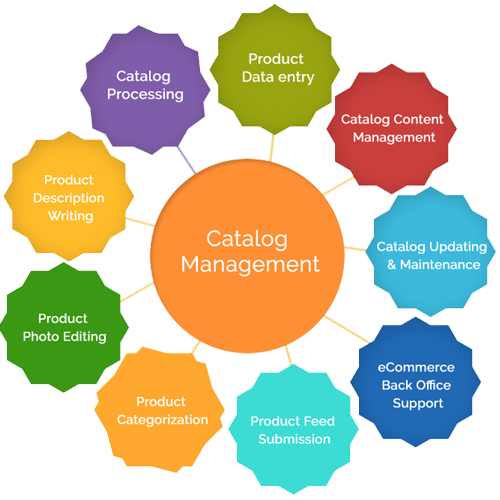Catalog management is all about organizing and handling the list of products or services a business offers. For online stores, this is super important. It involves creating and updating product descriptions, setting prices, and keeping track of how much stock you have.
With catalog management solutions, you can keep everything in order. These tools help you organize your online catalog, making it easy to find and buy products. You can sort items by their names, descriptions, prices, where they come from, and other important details.

With catalog management, you can store, access, update, and distribute information about your ecom and retail products. And you can structure, categorize, and filter them based on:
- Product type
- Product name
- Description or keywords
- Hierarchy
- Attributes like size, color, and brand
- Pricing
- Supplier
- SKU
- Countless other parameters
With inventory management integration, multi-language and multi-currency support, quality control and compliance checks, and mobile/web optimization capabilities, you can use a catalog management system to improve your customer experience, streamline order processing and delivery, and monitor your products and services.
Expanding the product catalog
Whenever you have new products, you have to list them. But plenty of businesses also want to expand their product catalog using:
- Product attributes (sizes, colors)
- Bundling
- Kitting
- Private label offerings
Expanding your digital catalog like this can create real headaches if you lack the right tools. There may be multiple price points for each combination of products, and you’ll have to deal with diluting the brand. You could even run into trademark issues if your private label offering is too close to another protected name.
At its core, ecommerce catalog management involves ensuring that your online store accurately reflects the products or services you offer, and that these offerings are presented in a way that resonates with your target audience. This may include tasks such as adding new products, updating existing listings with detailed product descriptions and images, categorizing products into relevant groups or collections, and implementing search and navigation features to help customers find what they’re looking for quickly and easily.
Effective catalog management involves honing product data for search engine optimization and other discovery channels, as well as maintaining consistency across all listings. This not only improves the user experience for shoppers but also enhances your store’s visibility in search results and increases the likelihood of attracting potential customers.
In essence, ecommerce catalog management is about creating a cohesive, user-friendly online shopping experience that encourages exploration, simplifies decision-making, and ultimately leads to conversions and sales. It’s a critical aspect of running a successful ecommerce business and requires strategic planning and ongoing maintenance to ensure continued success.


